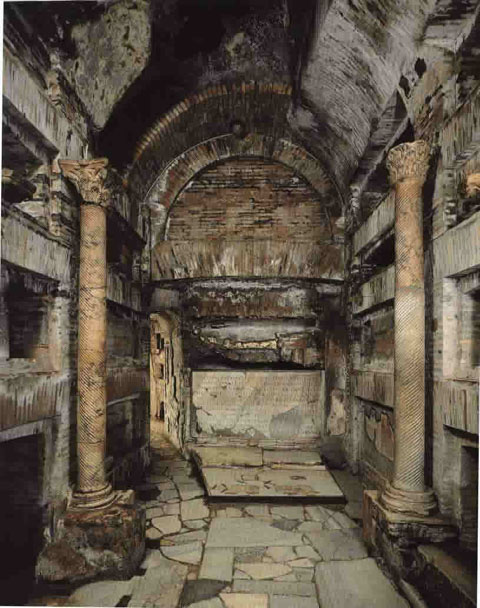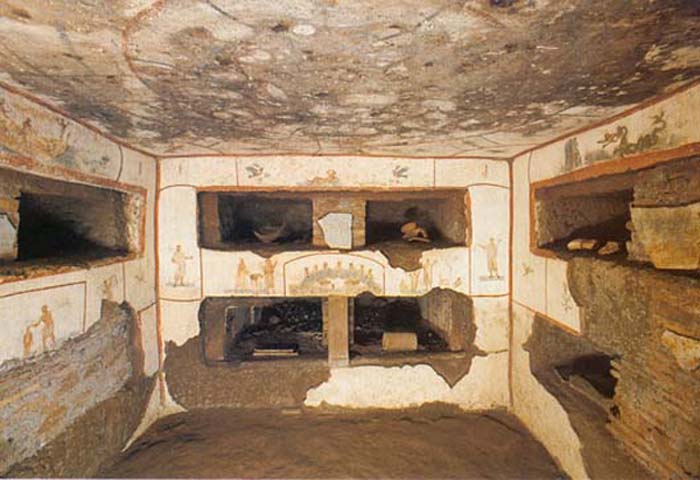The Early Christian time period began with the death of Christ in Judea, which was an outpost of the Roman empire. Rome did not like that Christians refused to declare the divinity of the Emperor, so many Christians were persecuted. This meant that Christianity essentially became on underground religion, mostly observed by the lower class. Since Christians had to hide their faith they created an elaborate system of underground tunnels, called the Catacombs. The catacombs were created as a burial grounds for those who were persecuted for worshiping Christianity, but they became a refuge for many Christians. The apostles Peter and Paul are believed to be buried in the Catacombs of Rome. Meetings and worship services were held in the catacombs to escape the watchful eye of the Roman empire.
The catacombs were not just plain tunnels surrounded by dirt and earth, they were decorated greatly. The catacombs had fresco paintings and held many religious relics, they were actually quite beautiful considering where they were physically located.
 |
| Decorative Passageway in the Catacombs |
 |
| Burial chambers in the Roman Catacombs |
 |
| Artwork in the Catacombs |
Even after Christianity was recognized by the Emperor Constantine in 313 C.E., Christians still viewed the Catacombs as holy ground. It is believed that 16 Popes and many Christians were buried in the Catacombs. The Catacombs are still considered to be a very sacred place today, as a Catholic I remember learning about them in religious classes as a child. Many people go and visit the Catacombs and Mass is even held there for people to attend.
The link below gives more information about the Catacombs:
http://www.catacombe.roma.it/en/index.phpThe Early Christian period is well known for a period of rapid expansion in Churches and Basilicas. These included centrally planned buildings, an entrance opposite of the apse, separate baptisteries and the chief goal was to glorify God. The two types of buildings that were constructed at the time were Centralized Churches and the Class Basilica.
 |
| Centralized Church layout |
 |
| Classic Basilica layout |
Current Applications:
 |
| A modern day church with classic basilica layout |
 |
| A kitchen by Clive Christian, who uses early christian design styles |
There is a beautiful glass church in Arkansas that is designed based off of the classic basilica building style. Many religious ceremonies take place there, but it is mostly used for weddings.



No comments:
Post a Comment